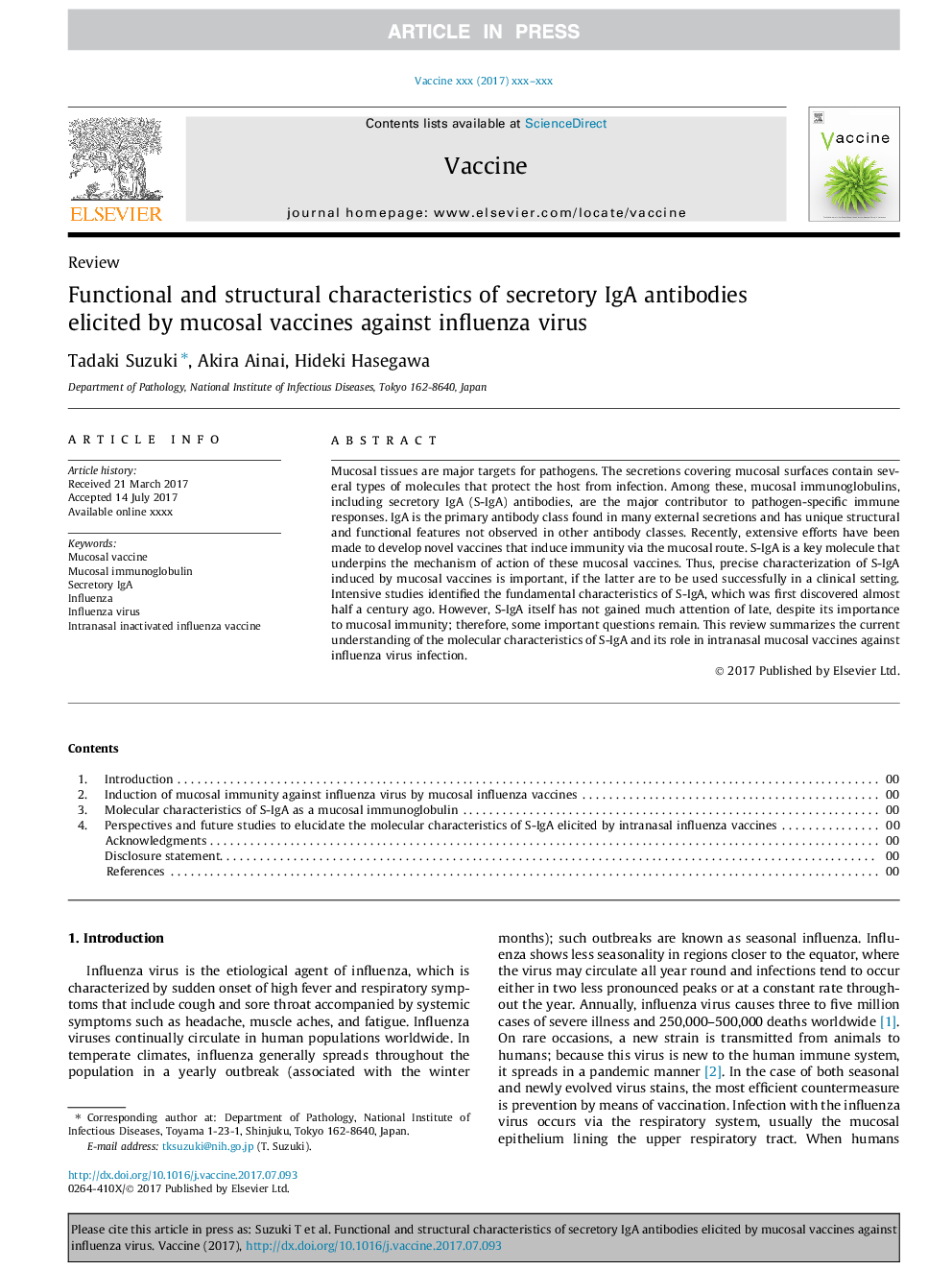| Article ID | Journal | Published Year | Pages | File Type |
|---|---|---|---|---|
| 5536890 | Vaccine | 2017 | 6 Pages |
Abstract
Mucosal tissues are major targets for pathogens. The secretions covering mucosal surfaces contain several types of molecules that protect the host from infection. Among these, mucosal immunoglobulins, including secretory IgA (S-IgA) antibodies, are the major contributor to pathogen-specific immune responses. IgA is the primary antibody class found in many external secretions and has unique structural and functional features not observed in other antibody classes. Recently, extensive efforts have been made to develop novel vaccines that induce immunity via the mucosal route. S-IgA is a key molecule that underpins the mechanism of action of these mucosal vaccines. Thus, precise characterization of S-IgA induced by mucosal vaccines is important, if the latter are to be used successfully in a clinical setting. Intensive studies identified the fundamental characteristics of S-IgA, which was first discovered almost half a century ago. However, S-IgA itself has not gained much attention of late, despite its importance to mucosal immunity; therefore, some important questions remain. This review summarizes the current understanding of the molecular characteristics of S-IgA and its role in intranasal mucosal vaccines against influenza virus infection.
Related Topics
Life Sciences
Immunology and Microbiology
Immunology
Authors
Tadaki Suzuki, Akira Ainai, Hideki Hasegawa,
